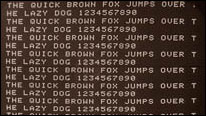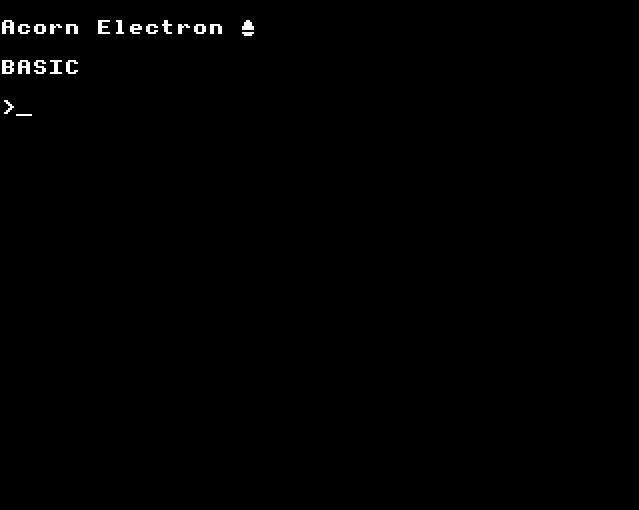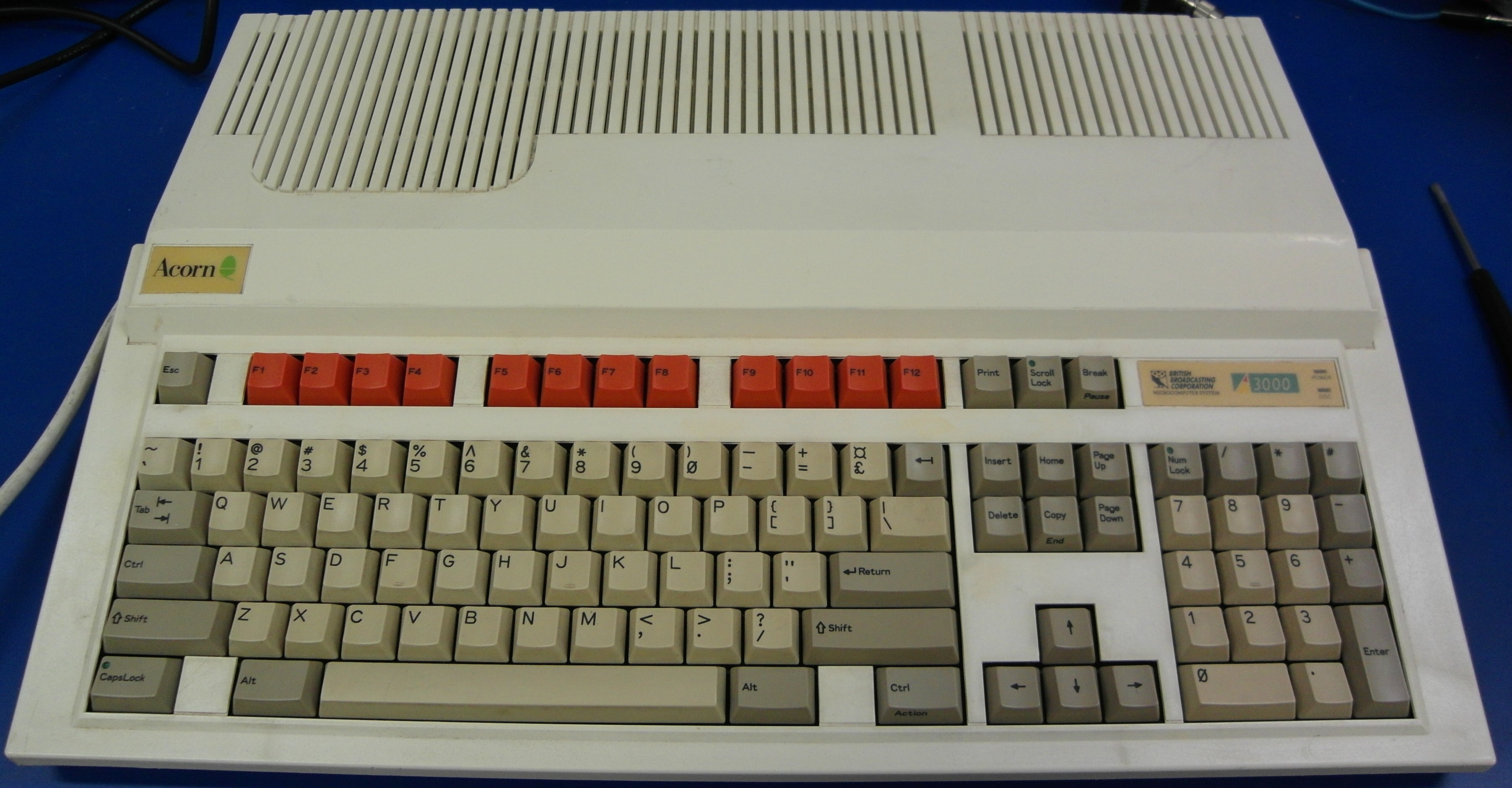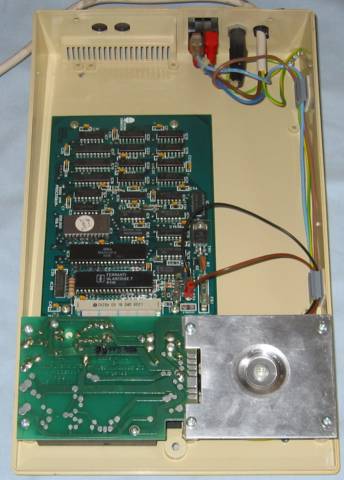|
BBC Micro
The BBC Microcomputer System, or BBC Micro, is a family of microcomputers developed and manufactured by Acorn Computers in the early 1980s as part of the BBC's Computer Literacy Project. Launched in December 1981, it was showcased across several educational BBC television programmes, such as ''The Computer Programme'' (1982), ''Making the Most of the Micro'' and ''Computers in Control'' (both 1983), and ''Micro Live'' (1985). Created in response to the BBC's call for bids for a microcomputer to complement its broadcasts and printed material, Acorn secured the contract with its rapidly prototyped “Proton” system, which was subsequently renamed the BBC Micro. Although it was announced towards the end of 1981, production issues initially delayed the fulfilment of many orders, causing deliveries to spill over into 1982. Nicknamed the “Beeb”, it soon became a fixture in British schools, advancing the BBC’s goal of improving computer literacy. Renowned for its strong build q ... [...More Info...] [...Related Items...] OR: [Wikipedia] [Google] [Baidu] |
Acorn Computers
Acorn Computers Ltd. was a British computer company established in Cambridge, England in 1978 by Hermann Hauser, Christopher Curry (businessman), Chris Curry and Andy Hopper. The company produced a number of computers during the 1980s with associated software that were highly popular in the domestic market, and they have been historically influential in the development of computer technology like Central processing unit, processors. The company's Acorn Electron, released in 1983, and the later Acorn Archimedes, were highly popular in Britain, while Acorn's computer dominated the educational computer market during the 1980s. The company also designed the ARM architecture family, ARM architecture and the operating system for it. The architecture part of the business was spun-off as Advanced RISC Machines under a joint venture with Apple Inc., Apple and VLSI Technology, VLSI in 1990, now known as Arm Holdings, which is dominant in the mobile phone and personal digital assistant ... [...More Info...] [...Related Items...] OR: [Wikipedia] [Google] [Baidu] |
Teletext
Teletext, or broadcast teletext, is a standard for displaying text and rudimentary graphics on suitably equipped television sets. Teletext sends data in the broadcast signal, hidden in the invisible vertical blanking interval area at the top and bottom of the screen. The teletext decoder in the television buffers this information as a series of "pages", each given a number. The user can display chosen pages using their remote control. In broad terms, it can be considered as Videotex, a system for the delivery of information to a user in a computer-like format, typically displayed on a television or a dumb terminal, but that designation is usually reserved for systems that provide bi-directional communication, such as Prestel or Minitel. Teletext was created in the United Kingdom in the early 1970s by John Adams, Philips' lead designer for video display units to provide closed captioning to television shows for the hearing impaired. Public teletext information services were ... [...More Info...] [...Related Items...] OR: [Wikipedia] [Google] [Baidu] |
Micro Live
''Micro Live'' is a BBC2 TV series that was produced by David Allen as part of the BBC's Computer Literacy Project, and followed on from earlier series such as '' The Computer Programme'', '' Computers in Control'', and '' Making the Most of the Micro''. As the name implies, the series was broadcast live (so causing its own problems such as the infamous incident of the hacked email account). The first programme was a one-off two-hour-long special, broadcast on Sunday 2 October 1983 as ''Making the Most of the Micro Live''.This was the name as featured in the title sequence, with ''Live'' being drawn across its predecessor's original title text. A second one-hour special was broadcast in the summer of 1984, during which it was announced that ''Micro Live'' would be back on BBC2 as a regular monthly one-hour series starting in October of that year. A second season of ''Micro Live'' launched in 1985 as a weekly half-hour programme and was followed by a third series of weekly half-h ... [...More Info...] [...Related Items...] OR: [Wikipedia] [Google] [Baidu] |
Making The Most Of The Micro
''Making the Most of the Micro'' is a TV series broadcast in 1983 as part of the BBC's Computer Literacy Project. It followed the earlier series '' The Computer Programme''. Unlike its predecessor, ''Making the Most of the Micro'' delved somewhat deeper into the technicalities and uses that microcomputers could be put to, once again mainly using the BBC Micro in the studio for demonstration purposes. The series was followed by ''Micro Live''. Presenters Ian McNaught-Davis (known as 'Mac') was once again the anchorman but Chris Serle and Gill Nevill were absent, instead various experts were brought in as required to demonstrate some of the more technical aspects of the microcomputers and their uses. John Coll was the main technical 'bod' (he had also written the User Guide for the BBC Micro along with other manuals) and Ian Trackman also featured - he wrote most of the software that was used for demonstrating certain features of the microcomputer, not only for this series but a ... [...More Info...] [...Related Items...] OR: [Wikipedia] [Google] [Baidu] |
The Computer Programme
''The Computer Programme'' is a TV series, produced by Paul Kriwaczek, originally broadcast by the BBC (on BBC 2) in 1982. The idea behind the series was to introduce people to computers and show them what they were capable of. The BBC wanted to use their own computer, so the BBC Micro was developed by Acorn Computers as part of the ''BBC Computer Literacy Project'', and was featured in this series. The series was successful enough for two series to follow it, namely '' Making the Most of the Micro'' in 1983 and '' Micro Live'' from 1984 until 1987. Presenters The two studio presenters were Ian McNaught-Davis (known as 'Mac') and Chris Serle, the former showing the latter some of the rudimentary basics of computer operation and BASIC programming. The 'on location' reporter was Gill Nevill. The studio made heavy use of the new BBC Micro, which had recently been launched. Production Filming of the series took place in October 1981, before Acorn had fully completed the devel ... [...More Info...] [...Related Items...] OR: [Wikipedia] [Google] [Baidu] |
Computer Literacy
Computer literacy is defined as the knowledge and ability to use computers and related technology efficiently, with skill levels ranging from elementary use to computer programming and advanced problem solving. Computer literacy can also refer to the comfort level someone has with using computer programs and applications. Another valuable component is understanding how computers work and operate. Computer literacy may be distinguished from computer programming, which primarily focuses on the design and coding of computer programs rather than the familiarity and skill in their use. Various countries, including the United Kingdom and the United States, have created initiatives to improve national computer literacy rates. Background Computer literacy differs from digital literacy, which is the ability to communicate or find information on digital platforms. Comparatively, computer literacy measures the ability to use computers and to maintain a basic understanding of how they oper ... [...More Info...] [...Related Items...] OR: [Wikipedia] [Google] [Baidu] |
Microcomputer
A microcomputer is a small, relatively inexpensive computer having a central processing unit (CPU) made out of a microprocessor. The computer also includes memory and input/output (I/O) circuitry together mounted on a printed circuit board (PCB). Microcomputers became popular in the 1970s and 1980s with the advent of increasingly powerful microprocessors. The predecessors to these computers, mainframes and minicomputers, were comparatively much larger and more expensive (though indeed present-day mainframes such as the IBM System z machines use one or more custom microprocessors as their CPUs). Many microcomputers (when equipped with a keyboard and screen for input and output) are also personal computers (in the generic sense). An early use of the term "personal computer" in 1962 predates microprocessor-based designs. ''(See "Personal Computer: Computers at Companies" reference below)''. A "microcomputer" used as an embedded control system may have no human-readable input and ... [...More Info...] [...Related Items...] OR: [Wikipedia] [Google] [Baidu] |
Acorn Electron
The Acorn Electron (nicknamed the Elk inside Acorn and beyond) was introduced as a lower-cost alternative to the BBC Micro educational/home computer, also developed by Acorn Computers, to provide many of the features of that more expensive machine at a price more competitive with that of the ZX Spectrum. It has 32 kilobytes of random-access memory, RAM, and its read-only memory, ROM includes BBC BASIC II together with the Acorn MOS, operating system. Announced in 1982 for a possible release the same year, it was eventually introduced on 25 August 1983 priced at £199. The Electron is able to save and load programs onto compact audio cassette, audio cassette via a cable, originally supplied with the computer, connecting it to any standard tape recorder with the appropriate sockets. It is capable of bitmapped graphics, and can use either a contemporary television set, a colour (RGB) monitor or a monochrome monitor as its display. Several expansions were made available to provide m ... [...More Info...] [...Related Items...] OR: [Wikipedia] [Google] [Baidu] |
Acorn Archimedes
The Acorn Archimedes is a family of personal computers designed by Acorn Computers of Cambridge, England. The systems in this family use Acorn's own ARM architecture processors and initially ran the Arthur operating system, with later models introducing RISC OS and, in a separate workstation range, RISC iX. The first Archimedes models were introduced in 1987, and systems in the Archimedes family were sold until the mid-1990s alongside Acorn's newer Risc PC and A7000 models. The first Archimedes models, featuring a 32-bit ARM2 RISC CPU running at 8 MHz, provided a significant upgrade from Acorn's previous machines and 8-bit home computers in general. Acorn's publicity claimed a performance rating of 4 MIPS.These being equivalent to VAX-11/750 instructions. Later models featured the ARM3 CPU, delivering a substantial performance improvement, and the first ARM system-on-a-chip, the ARM250. The Archimedes preserves a degree of compatibility with Acorn's earlier m ... [...More Info...] [...Related Items...] OR: [Wikipedia] [Google] [Baidu] |
Acorn Atom
The Acorn Atom is a home computer made by Acorn Computers Ltd from 1980 to 1982, when it was replaced by the BBC Micro. The BBC Micro began life as an upgrade to the Atom, originally known as the Proton. The Atom was a progression of the MOS Technology 6502-based machines that the company had been making from 1979. The Atom was a cut-down Acorn System 3 without a disk drive but with an integral keyboard and cassette tape interface, sold in either kit or complete form. In 1980 it was priced between £120 in kit form, £170 () ready assembled, to over £200 for the fully expanded version with 12 KB of RAM and the floating-point extension ROM. Hardware The minimum Atom had 2 KB of RAM and 8 KB of ROM, with the maximum specification machine having 12 KB of each. An additional floating-point ROM was also available. The 2 KB of RAM was divided between 1 KB of Block Zero RAM (including the 256 bytes of " zero page") and 512 bytes for the screen ( ... [...More Info...] [...Related Items...] OR: [Wikipedia] [Google] [Baidu] |
Tube (BBC Micro)
In the BBC Microcomputer System, the Tube is the expansion interface and architecture which allows the BBC Micro to communicate with a second processor, or ''coprocessor''. Under the Tube architecture, the coprocessor runs the application software for the user, whilst the Micro (acting as a ''host'') provides all I/O functions, such as screen display, keyboard and storage devices management. A coprocessor unit can be coldplugged into any BBC Micro with a disk interface (whose ROM contained the necessary host software) and used immediately. Implementation The 40-pin IDC "Tube" connector is a simple slave connection to the main bus of the host processor, with 8 data lines, 7 address lines, and an interrupt input. The Tube protocols are implemented by hardware in the attached device. Inside the coprocessor unit a proprietary chip (the ''Tube ULA'', manufactured initially by Ferranti) interfaces and logically isolates the host and coprocessor buses. This allows the Tube to wo ... [...More Info...] [...Related Items...] OR: [Wikipedia] [Google] [Baidu] |
Econet
Econet was Acorn Computers's low-cost local area network system, based on a Carrier-sense multiple access with collision detection, CSMA-CD serial protocol carried over a five-wire Bus (computing), data bus, intended for use by schools and small businesses. It was widely used in those areas, and was supported by a large number of different computer and server systems produced both by Acorn and by other companies. Econet software was later mostly superseded by the TCP/IP-based ''Acorn Universal Networking'' (AUN), though some suppliers were still offering bridging kits to interconnect old and new networks. AUN was in turn superseded by the ''Acorn Access+'' software. Implementation history Econet was specified in 1980, and first developed for the Acorn Atom and Acorn System 2/Acorn System 3, 3/Acorn System 4, 4 computers in 1981. Also in that year the BBC Micro was released, initially with provision for floppy disc and Econet interface ports, but without the necessary s ... [...More Info...] [...Related Items...] OR: [Wikipedia] [Google] [Baidu] |








